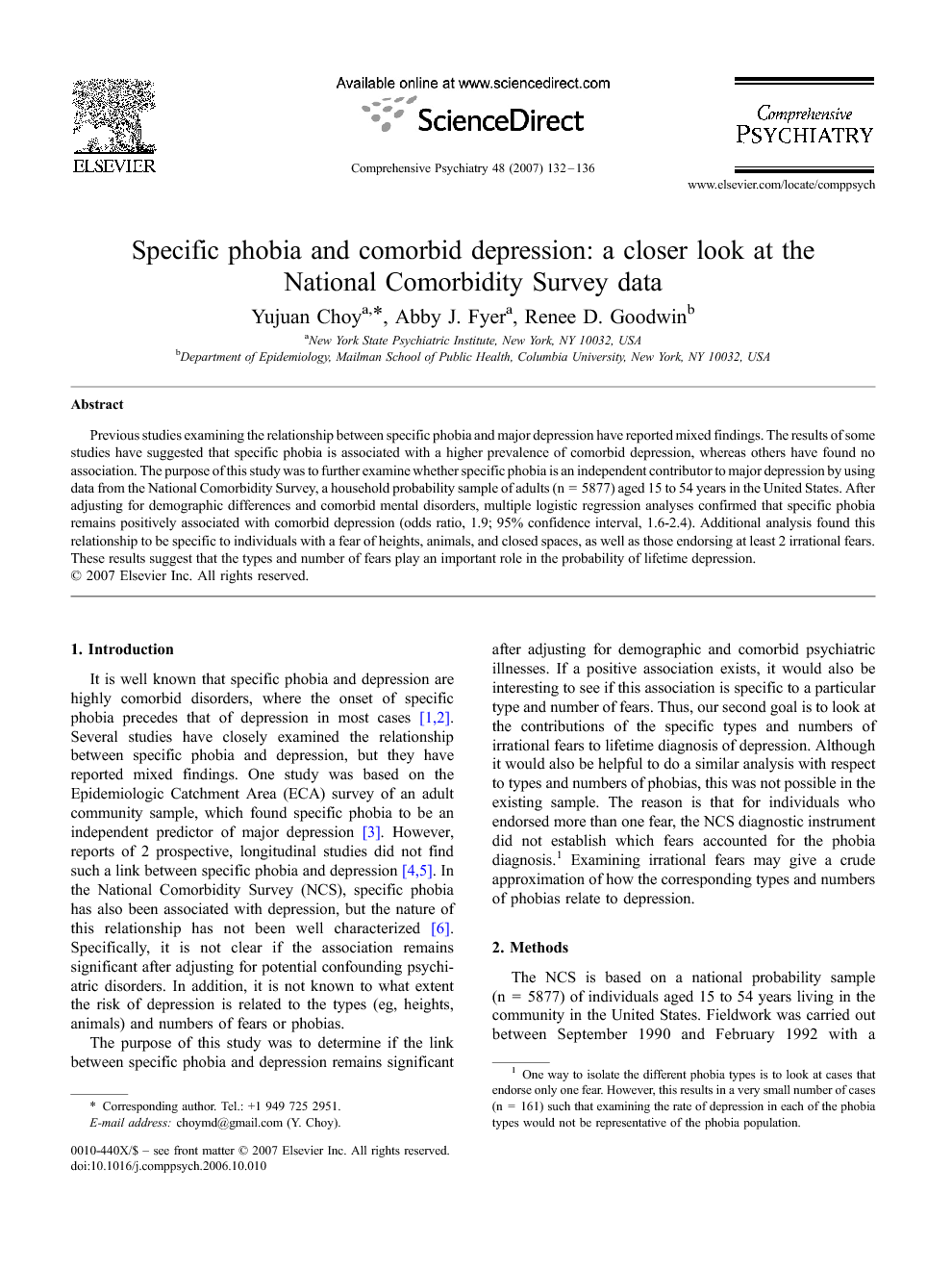ترجمه فارسی عنوان مقاله
هراس خاص و افسردگی همزمان: نگاهی دقیقتر به بررسی داده های ملی همبودی
عنوان انگلیسی
Specific phobia and comorbid depression: a closer look at the National Comorbidity Survey data
| کد مقاله | سال انتشار | تعداد صفحات مقاله انگلیسی |
|---|---|---|
| 30620 | 2007 | 5 صفحه PDF |
منبع

Publisher : Elsevier - Science Direct (الزویر - ساینس دایرکت)
Journal : Comprehensive Psychiatry, Volume 48, Issue 2, March–April 2007, Pages 132–136
ترجمه کلمات کلیدی
هراس خاص - افسردگی همزمان - داده های ملی همبودی
کلمات کلیدی انگلیسی
Specific phobia ,comorbid depression, National Comorbidity Survey data,

